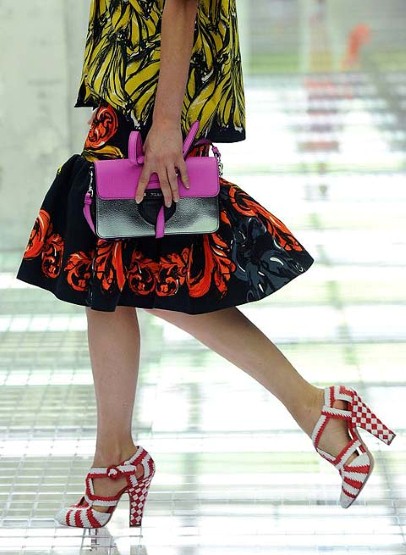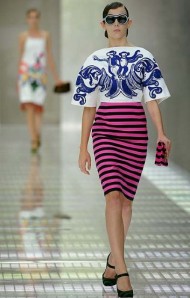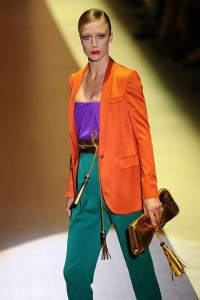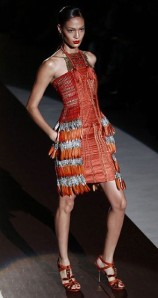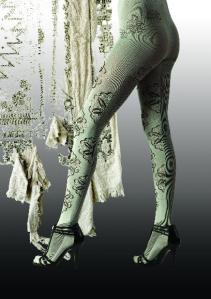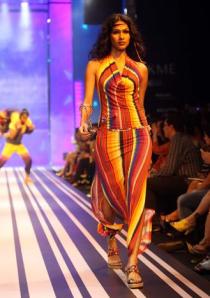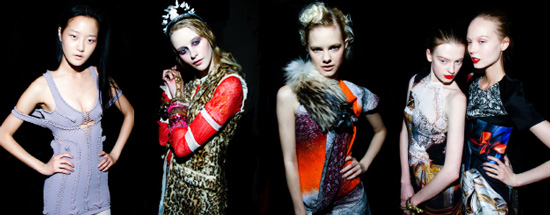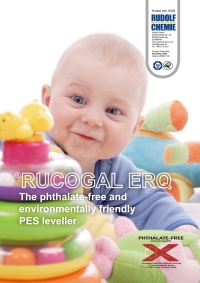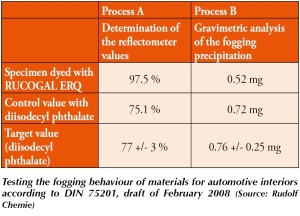
Nanocoating is getting more popular for special self-cleaning performance
Novel coating and finishing chemicals that enhance the performance of a textile material are important for textile producers to improve their profit margins. Textile coating is now a very diverse market covering both the traditional apparel sector and the rapidly growing technical textile sector.
Marketing Is Growing
Speciality coating and finishing chemicals are growing in importance to chemical manufacturers as they seek to diversify their markets and increase market share.
In India, for example, it is reported that the Indian speciality chemical market currently represents around 24% of the total chemical market and it is expected to grow by 15%, which is almost double the growth in the global speciality chemical industry.
Export of speciality chemicals from India is also expected to increase from US$4 billion in 2007 to US$12 billion in 2013. The reason is the rapid growth rate in the technical textiles market because speciality chemicals are finding more and more applications in new areas for textile materials such as construction (buildtech), automotive (mobiletech, and geotextiles / civil engineering (geotech). In the apparel market there are many applications opening up in clothing / footwear (clothtech), protection (Protech) and sporting / leisure areas (sporttech).
New developments in coating are focussed upon optimising the most desirable textile properties but simultaneously attempting to achieve higher profitability and productivity. This can be achieved by increasing production speeds as well as decreasing energy, diminishing waste and decreasing emissions.
Conventional thermal curing processes consume large amounts of energy when water-based coatings are used. Solvent coating processes consume less energy but liberate VOCs (volatile organic compounds) into the atmosphere, and solvent recovery systems for removal of VOCs are expensive.
Some textile coaters are looking towards radcure systems using UV radiation curing. (Note: Radcure, or radiation curing, technology uses electron beam (EB), ultraviolet (UV) light, or visible light to polymerize a reactive and usually solvent-free coating material.)

It has been calculated that if the thermal curing of a water-based coating system required 100% energy, a solvent coating process would require typically 25% energy. However, using a UV curing system would require only 0.5% energy. Novel chemical coating formulations consisting of monomers, oligomers and a photo-initiator are being developed. The emissions of VOCs are typically decreased by 80% but disadvantages can include the high cost of the chemicals and the generation of ozone. Huntsman Textile Effects, for example, are now producing a range of oligomers for textile UV curing applications. These include polyesteracrylates, epoxyacrylates and aliphatic urethane methacrylates that can be modified with appropriate resins and monomers to enhance the fabric properties.
Forming Coating With Nanoparticles
Another area that is opening up new opportunities for textile coating is the incorporation of different nanoparticles into the coating formulation.
Nanoparticles are particles whose size is less than 100nm (one nanometre is a billionth of a metre, i.e. 10-9 metres) and the properties of nanoparticles differ from those of the bulk material for two main reasons.
Firstly, nanoparticles have a relatively large surface area compared with the same mass of material produced in a larger form. As a result some materials that are normally inert in their larger form can become reactive as nanoparticles. Secondly, as the size of the nanoparticle decreases the properties of the material became progressively more reliant upon quantum effects. The net result of this is that the optical, electrical and magnetic properties are changed.
A major advantage of using nanoparticles in coatings is that it allows the production of very thin surface coatings, which can be optically transparent because the nanoparticles are too small to be seen by the human eye. The use of nanoparticles in textile coatings and finishes can extend the range of end uses and open up innovative approaches for new application areas. Some of the possible areas of exploitation of nanoparticles are summarised in the following table.

Nanoparticles in coatings
The use of functionalised nanoclays in combination with flame retardant coatings can be used to enhance intumescent coating effects. Devan Chemicals (Belgium) has utilised layered silicates in the form of reticular layers of crystals in nanoparticulate form to enhance flame retardancy in intumescent coatings that form a thick porous char when subjected to a flame source. The solid foam-like porous carbonaceous char structure thus provides a barrier to flame and heat transmission. Expandable graphites have also been developed by Devan Chemicals that on heating can expand the volume up to one hundred times that of the original graphite.
Conductive Coatings
Another field of activity is that of conductive coatings / smart coatings. Such coatings can be prepared by using intrinsically conductive polymers (ICPs). These are conjugated polymers in which the electrical conductivity can be increased by the addition of a small amount of a chemical. This doping technology generally involves a redox process whereby the electronic structure of the polymer is changed, and this process is reversible. Dispersions or solutions of ICPs can be applied by surface coating technologies to convey antistatic or conductive properties. A number of ICPs are now available such as polypyrrole, polyaniline, poly-3,4-ethylenedioxythiophene, and polythiophene.
Combined UV blocking and antimicrobial performance via surface coating offers considerable potential for apparel used in outdoor activities. Protection against skin damage from UV radiation combined with an antimicrobial action to kill bacteria that would otherwise build up within the garment as a result of perspiration exuded during physical activity are important in sporting and military apparel e.g. combat uniforms. Such an approach prevents the formation of malodours, enabling the garment to stay fresher for longer inbetween washings.

Zinc oxide nanoparticles have been claimed to be more stable compared with organic UV-blocking agents and in nanoparticulate form the increased surface area per unit mass of the zinc oxide coupled with the intense absorption in the UV region should enhance the UV blocking capability of the coating. Incorporating multifunctionality into coatings is a very fertile area for innovation. For example, military combat uniforms require multifunctional surface coating protection, typically incorporating ultrahydrophobicity, super-oleophobicity and self-cleaning properties combined with UV-blocking and antimicrobial protection. Many other outdoor fabrics such as tents, camouflage netting, awnings and architectural fabrics can similarly benefit from such coatings. This is particularly useful in high temperature / high humidity environments in which microbial attack can lead to physical deterioration and rotting of the textile, so that protective coatings can prolong the service life of the textile material.
Sol-gel treatments are now emerging from much research and development to provide enhanced textile performance. Sol-gel treatments can be utilised to produce nanosols (note: particle diameters smaller than 50nm), which are colloidal solutions of nanometre-sized metal oxide particles in aqueous or organic solvents. The nanosol is usually formed by hydrolysis of the precursor material and subsequent condensation reactions, followed by coating, drying or curing. The inorganic metal oxide-based three-dimensional network formed is usually in the amorphous (xerogel) form under moderate heat treatment conditions. Sol-gel treatments can thus produce nanosol finishes and coatings that can modify stiffness / drape, handle, absorbency, hydro / oleophobicity, abrasion resistance, photocatalytic activity, barrier functions, photochromic effects, bioactive systems e.g. controlled release systems, heat resistance, magnetic properties and conductivity.
Inorganic-organic Hybrid Coatings
The use of inorganic-organic hybrid coatings is growing in importance because of the wide range of functionalisation that such coatings and finishes can offer.
ISys MTX (CHT R. Beitlich GmbH, Tübingen, Germany) can be applied by padding and heat curing and used to permanently link iSys AG, the component containing silver (which has a high antibacterial activity) to textiles. iSys MTX as a sol-gel binder is claimed to provide better durability to washing compared with polyurethane or polyacrylate binders.
Another synergistic blend of inorganic-organic sol with polysiloxane, iSys HPX, is now able to provide an alternative hydrophobic finish to fluorocarbon chemistry. In another variant iSys SYN can be used as a vector protection finish. This utilises an inorganic-organic sol combined with polyurethane that enables permethrin (a potent insecticide) to be bound to the textile.
New Research On Silk Fabric
Recent work in Italy has demonstrated that inorganic-organic hybrid sol-gel treatments can impart a thin surface layer to silk Jacquard fabric used in high quality furnishing. This surface coating has good adhesion and optical transparency and is based upon a three-dimensional network based upon silicon oxide that protects the silk fabric from adhesion. The Martindale abrasion resistance of the silk fabric abraded against the standard wool abradant was greatly increased.
This article has been sourced.
Read More on UV-LED Curing Technology @ http://www.phoseon.com/
0.000000
0.000000

